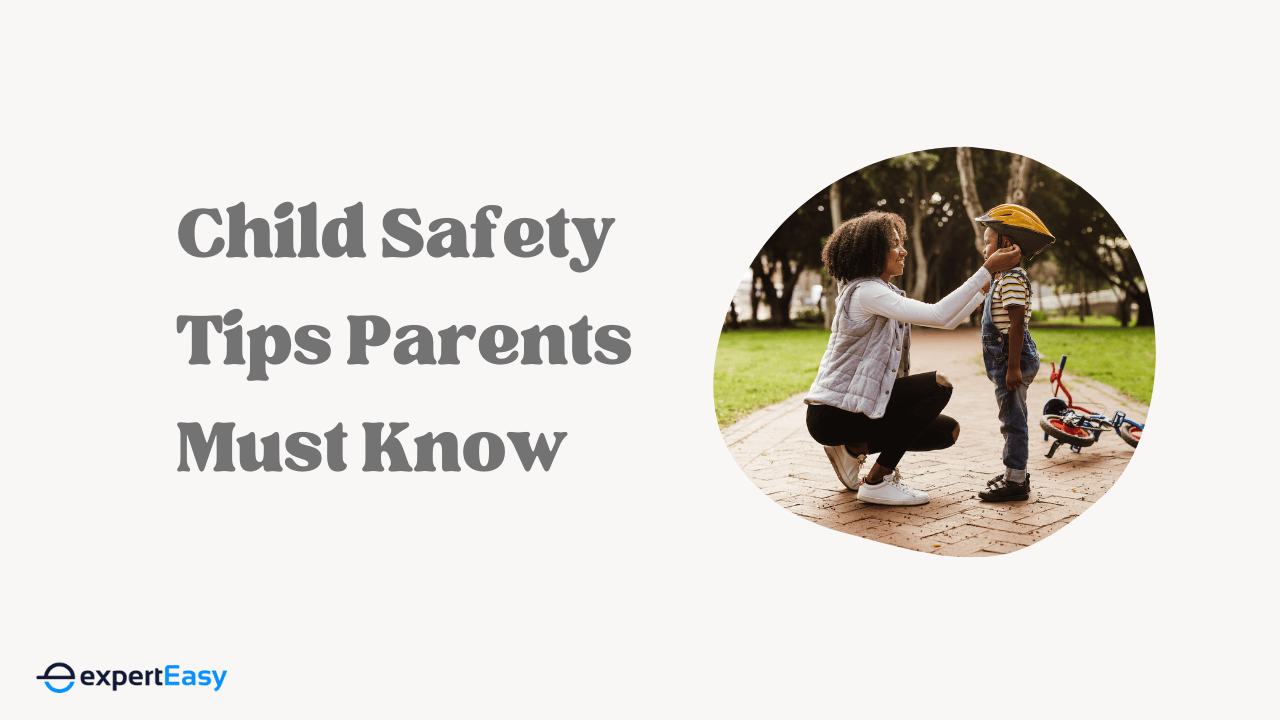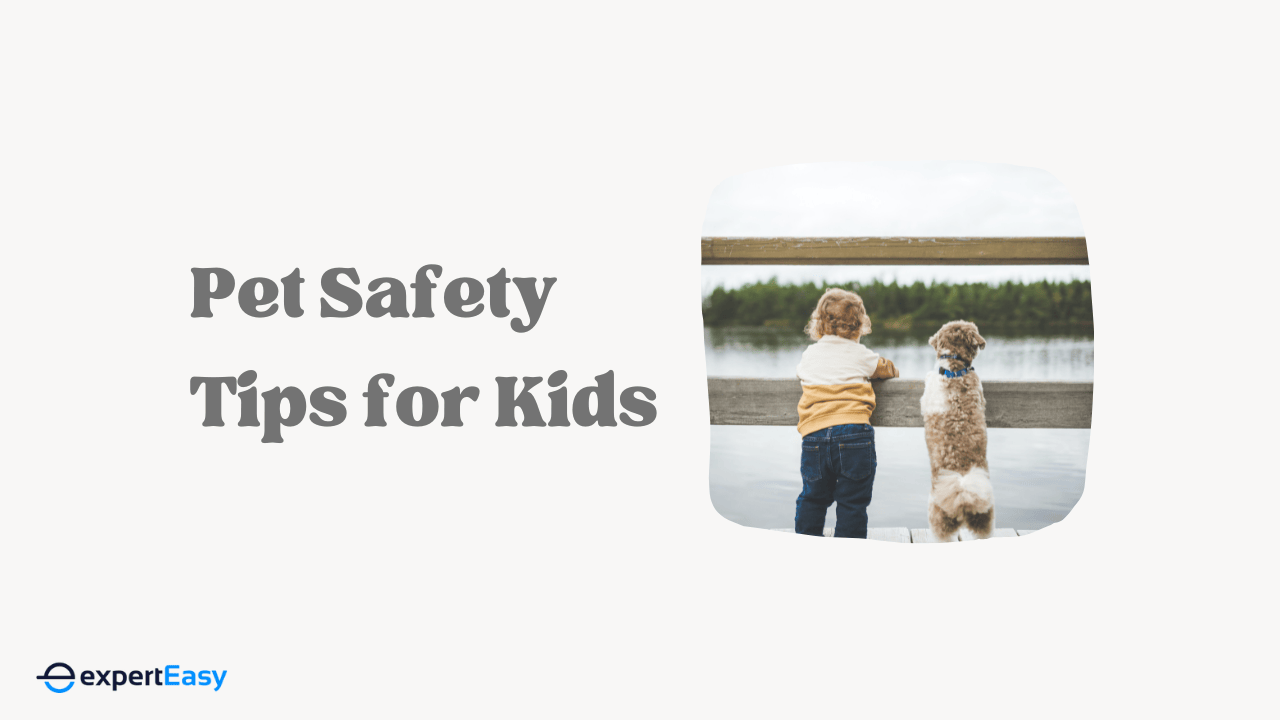Parenting is a beautiful journey filled with joys and challenges in equal measure. At the top of every parent's list is keeping their children safe from harm. With so many potential risks lurking around every corner, being prepared and well-informed is crucial. That's why we put this comprehensive guide together.
We've assembled 40 essential child safety tips every parent needs to know. From creating a secure home environment to navigating the bustling world outside, we've got your back. So, let's join forces and work towards a safer, happier future for our little ones - one invaluable tip at a time!
Child Safety in the Home

Your home should be a sanctuary for your family, but hidden hazards can pose threats to your child's well-being. Here are five essential tips to help you create a safer environment for your children within your home:
1. Secure heavy furniture and appliances.
To prevent accidental tip-overs, anchor heavy furniture to the wall, such as bookcases, dressers, and television stands. Also, secure appliances like TVs to the surface they're on to reduce the risk of accidents. The Consumer Product Safety Commission (CPSC) reports that one child dies every two weeks due to falling furniture or TVs in the US (CPSC, 2021).
2. Use safety gates.
Install safety gates at the top and bottom of stairs and around areas that might pose dangers, like the kitchen or fireplace. When choosing a gate to install, ensure they meet the Juvenile Products Manufacturers Association (JPMA) certification to guarantee quality and safety.
3. Store hazardous substances safely.
Keep cleaning supplies, medicines, and other toxic substances in high, locked cabinets. The American Association of Poison Control Centers reported that poison centers receive a call about a potential poisoning every 14.3 seconds, many involving children under six (AAPCC, 2020).
4. Set the water heater's temperature.
Set your home's water heater to no more than 120°F (48.9°C) to prevent scalding. Safe Kids Worldwide says a child can suffer a third-degree burn in just one second if the water is at 155°F (68.3°C) (Safe Kids Worldwide, 2021).
5. Install smoke and carbon monoxide detectors.
Install and regularly test smoke and carbon monoxide detectors on every level of your home, including bedrooms, for early detection. The National Fire Protection Association recommends changing batteries every six months and replacing the units every ten years.
Child Safety on a School Bus

The school bus is a daily part of many children's lives, and ensuring they're safe during their journey to and from school is vital. In this section, we'll explore five key tips for promoting school bus safety:
6. Teach proper boarding and exiting.
Educate your child on how to wait safely for the bus, how to board and exit, and the importance of using handrails to avoid slips, trips, and falls. According to the National Safety Council, most injuries on school buses occur during boarding or exiting.
7. Encourage safe behaviour.
Teach your child to always face forward while seated and remain calm while on the bus. This behaviour ensures the driver isn't distracted and all passengers remain safe.
8. Follow the 10-foot rule.
Instruct your child always to maintain a 10-foot distance from the bus when crossing the street. This allows the driver to see them clearly, reducing the risk of accidents when crossing the streets.
9. Review safety procedures.
Familiarize yourself with the bus safety rules and evacuation procedures provided by your child's school. This knowledge will enable you to discuss and reinforce these rules with your child to help them prepare for emergencies.
10. Communicate with the bus driver.
Maintain open communication with the bus driver and school transportation personnel to ensure your child's safety. Make the driver aware of any special needs your child may have, such as a poor vision issue or a disability that could impact your child’s travel safety.
Child Safety in the Car

Road accidents are a leading cause of injury among children, but car travel is inevitable for most families. To minimize the risks associated with car travel, follow these five crucial car safety tips:
11. Use the correct car seat.
Always use the appropriate car seat for your child's age, height, and weight. The American Academy of Pediatrics (AAP) provides guidelines for choosing the right car seat and recommends that children remain in the rear-facing position until they reach the maximum height or weight allowed by their car seat.
12. Install car seats properly.
Ensure that the car seat is installed correctly according to the manufacturer's instructions. If unsure, visit a local car seat inspection station or contact a certified Child Passenger Safety Technician (CPST) for assistance.
13. Teach proper seat belts use.
Once your child outgrows their car seat, ensure they understand the importance of wearing a seat belt and using it properly. The National Highway Traffic Safety Administration (NHTSA) recommends that children under 13 years of age always ride in the back seat.
14. Never leave a child unattended in a car.
Never leave your child alone in a parked car, even if the windows are down or the engine is running. According to KidsAndCars.org, on average, 39 children die from vehicular heatstroke yearly.
15. Model safe driving behavior
Be a good role model by practicing safe driving habits, like avoiding distracted driving, following speed limits, and adhering to traffic laws. Your child will learn from your example.
Child Safety Online

As technology permeates every aspect of our lives, teaching children how to stay safe online becomes increasingly important. Here are five essential tips to help you guide your child through the digital world safely:
16. Monitor internet use.
Keep track of your child's online activities, including which websites they visit and who they communicate with. Consider using parental control software to limit their access to inappropriate content.
17. Set clear rules.
Establish and enforce clear rules for internet use, such as limiting screen time, prohibiting sharing of personal information, and requiring permission before downloading any content.
18. Teach online safety.
Educate your child about online dangers like cyberbullying, phishing, and malware. Teach them how to recognize and avoid these threats, as well as how to report suspicious activity or interactions.
19. Encourage open communication.
Maintain open lines of communication with your child about their online experiences. Let them know they can come to you if they encounter any problems or concerns while using the internet.
20. Be aware of social media risks.
Familiarize yourself with the various social media platforms your child uses and understand the risks associated with them. Monitor their social media accounts and remind them to keep their profiles private.
Child Safety When Travelling

Traveling with children can be both exciting and challenging, but it's essential to prioritize their safety during your adventures. Here are five important tips for keeping your child safe while you're on the go:
21. Teach road safety.
Educate your child on basic road safety rules, like looking both ways before crossing the street, using crosswalks, obeying traffic signals, and how to carry themselves about at regular stops.
22. Use child identification.
Ensure your child carries identification with their name, your contact information, and any relevant medical information when traveling. Consider using an ID bracelet or a temporary tattoo with your contact details.
23. Maintain a safe distance from strangers.
Instruct your child to maintain a safe distance from strangers and teach them to trust their instincts if they feel uncomfortable or threatened. This is particularly helpful if you're traveling by public transport.
24. Keep track of your child.
Keep a close eye on your child, especially in crowded areas or places where they could easily get separated from you. Sites like amusement parks, airports, or shopping malls are especially challenging.
25. Pack a medical kit.
Bring a medical kit with all the essentials, including medicines, first aid supplies, and any special items your child needs. You can keep it in your car or your luggage, depending on where you travel.
Child Safety in Sports and Recreational Activities

Engaging in sports and recreational activities is vital for your child's physical and emotional well-being. However, such activities also carry risks of injury. In this section, we'll provide five essential tips to help you ensure your child stays safe while participating in sports and recreational activities:
26. Choose age-appropriate activities.
Select sports and activities that are suitable for your child's age, skill level, and physical development. This will minimize the risk of injury and create a positive and enjoyable experience.
27. Insist on proper protective gear.
Ensure your child wears the appropriate protective gear for each activity, such as helmets, mouthguards, or knee pads. This equipment can significantly reduce the risk of injury during play.
28. Teach proper techniques and rules.
Educate your child on the correct techniques and rules for each sport or activity. Understanding and following these guidelines will help prevent injuries and foster good sportsmanship.
29. Monitor weather and environmental conditions.
Be aware of the weather and environmental conditions during outdoor activities. Ensure your child stays hydrated, wears sunscreen, and dresses appropriately to prevent heat-related illnesses or cold-related injuries.
30. Encourage warm-ups and cool-downs.
Teach your child the importance of warming up and cooling down before and after physical activities. These exercises help reduce the risk of muscle strains, sprains, and other injuries.
Child Safety Around Pets and Animals

Interactions with pets and animals can be a source of joy and enrichment for children, but they can also pose safety risks if not handled with care. Here are five important tips to keep your child safe around pets and animals:
31. Supervise interactions with pets.
Always supervise your child's interactions with pets, especially when they're young or encountering a new animal. Close monitoring helps prevent incidents of biting, scratching, or other harm.
32. Teach respectful and gentle behaviour.
Educate your child on how to approach and handle pets and animals with respect and gentleness. Explain the importance of not startling or harassing animals to minimize the risk of aggression or injury.
33. Understand animal body language.
Teach your child to recognize and interpret basic animal body language, like growling, hissing, or flattened ears. This knowledge can help them avoid potential conflict or harm.
34. Keep pets' vaccinations and health checks up-to-date.
Ensure your pets receive regular vaccinations and health check-ups to protect your family from zoonotic diseases or infections. Consult your veterinarian for specific recommendations based on your pet's species and lifestyle.
35. Be cautious around wild animals.
Instruct your child to maintain a safe distance from wild animals and never to approach, feed, or touch them. Explain the risks associated with wild animals, such as injury or disease transmission, and encourage a healthy respect for nature.
Child Safety in Public Spaces

Navigating public spaces with your child requires a heightened sense of awareness to ensure their safety. In this section, we'll delve into five essential tips to help keep your child safe and secure while visiting parks, shopping malls, or other public areas:
36. Teach stranger awareness.
Educate your child about the concept of "stranger danger" and the importance of not accepting gifts or invitations from unfamiliar people. Encourage them always to stay close to a trusted adult and seek help if they feel unsafe.
37. Establish a lost-and-found plan.
Create a plan for what your child should do if they become separated from you in a public space. Identify recognizable landmarks or safe spots to meet, and make sure your child knows your full name and contact information.
38. Promote playground safety.
Teach your child the basic rules of playground safety, such as waiting their turn, using equipment properly, and being mindful of other children. Regularly inspect playground equipment for any hazards, like broken parts or sharp edges.
39. Be alert in parking lots and garages.
When walking through parking lots or garages with your child, hold their hand and remain vigilant. Teach them to be aware of moving vehicles and to stay close to you at all times.
40. Encourage safe social interactions.
Foster a sense of empathy and respect in your child by teaching them how to interact with others safely and politely. Encourage them to share, use kind words, and respect the personal space of others while in public places.
Why is Child Safety So Important?
Child safety is a crucial aspect of parenting that cannot be overlooked, as it directly impacts your child's well-being and development. By creating a safe and nurturing environment, you empower your child to grow into a confident and responsible adult. Here are five key reasons why child safety is of utmost importance:
#1. Child Safety Affects Child Development
A secure and hazard-free environment allows children to explore, learn, and develop without fear of injury or harm. This freedom to interact with their surroundings fosters cognitive, emotional, and physical development, enabling them to reach their full potential.
#2. Prevention of Injuries and Fatalities
Prioritizing child safety helps prevent accidents, injuries, and fatalities. By taking proactive steps to identify and mitigate risks in various aspects of your child's life, you can significantly reduce the likelihood of them getting hurt or experiencing life-threatening incidents.
#3. Fosters Trust and Emotional Security
Ensuring your child's safety cultivates a sense of trust and emotional security. When children feel safe, they develop a strong bond with their caregivers and become more open to expressing their feelings and concerns. This emotional connection is critical for their mental health and resilience in the face of adversity.
#4. Teaches Responsibility and Self-Protection
By educating your child about safety measures and encouraging their participation in maintaining a safe environment, you instill a sense of responsibility and self-protection. As they age, they will be better equipped to recognize potential dangers and take appropriate action to protect themselves and others.
#5. Contributes to a Healthy and Active Lifestyle
A safe environment promotes a healthy and active lifestyle, allowing children to engage in physical activities, sports, and outdoor play without fear of injury. This fosters a love for exercise and movement, providing long-term physical and mental health benefits.
The “Golden Rule of Child Safety”
When it comes to child safety, the golden rule that every parent should remember is always to be proactive, vigilant, and adaptable. This powerful principle is the cornerstone of safeguarding your child's well-being and helps you navigate the ever-changing landscape of their growth and development.
By consistently assessing potential hazards and adapting your approach to address them, you create a secure environment for your child to flourish. Embrace the responsibility of being your child's guardian, and empower them with the knowledge and tools to confidently face the world.
The golden rule of child safety is not only about preventing harm but also about nurturing resilience, self-awareness, and independence in your child, ultimately paving the way for their successful future.
Frequently Asked Questions (FAQs)
Here are some frequently asked questions about child safety and protection for parents.
At what age should I start teaching my child about safety?
It's never too early to start teaching your child about safety. As soon as they begin to understand and follow basic instructions, you can start introducing age-appropriate safety lessons. For example, you can teach a toddler not to touch a hot stove or help a preschooler understand the importance of holding hands while crossing the street.
How do I choose the right car seat for my child?
Consider your child's age, height, and weight to choose the right car seat. Refer to the National Highway Traffic Safety Administration (NHTSA) guidelines. Always select a car seat that meets your country's safety standards and is appropriate for your vehicle.
How can I protect my child from online predators?
To protect your child from online predators, monitor their internet usage, set clear rules for online communication, and teach them about online safety. Encourage open communication about their online experiences and ensure they know to report any suspicious or inappropriate interactions.
How do I teach my child to be safe around water?
Start by teaching your child basic water safety rules, such as not running near pools, never swimming alone, and only entering the water when a responsible adult is present. Enroll your child in swimming lessons to help them develop water confidence and essential swimming skills. When at a pool or beach, always supervise your child closely.
What precautions should I take to keep my child safe in crowded places?
Hold your child's hand in crowded places or use a child safety harness to prevent separation. Establish a designated meeting spot in case you get separated, and teach your child to identify and approach a safe adult, like a security officer or store employee, for help. Additionally, ensure your child carries identification with your contact information.
Summing it Up!
As parents, we are responsible for creating a safe environment for our children and teaching them how to navigate the world safely. By implementing these 40 child safety tips and fostering open communication, you'll be well-equipped to protect your little ones from potential dangers.
Remember that every child is unique, and adapting these safety measures to suit your child's age and developmental stage is crucial. Stay vigilant, informed, and proactive in your approach to child safety, and enjoy the journey of raising confident and responsible individuals!







